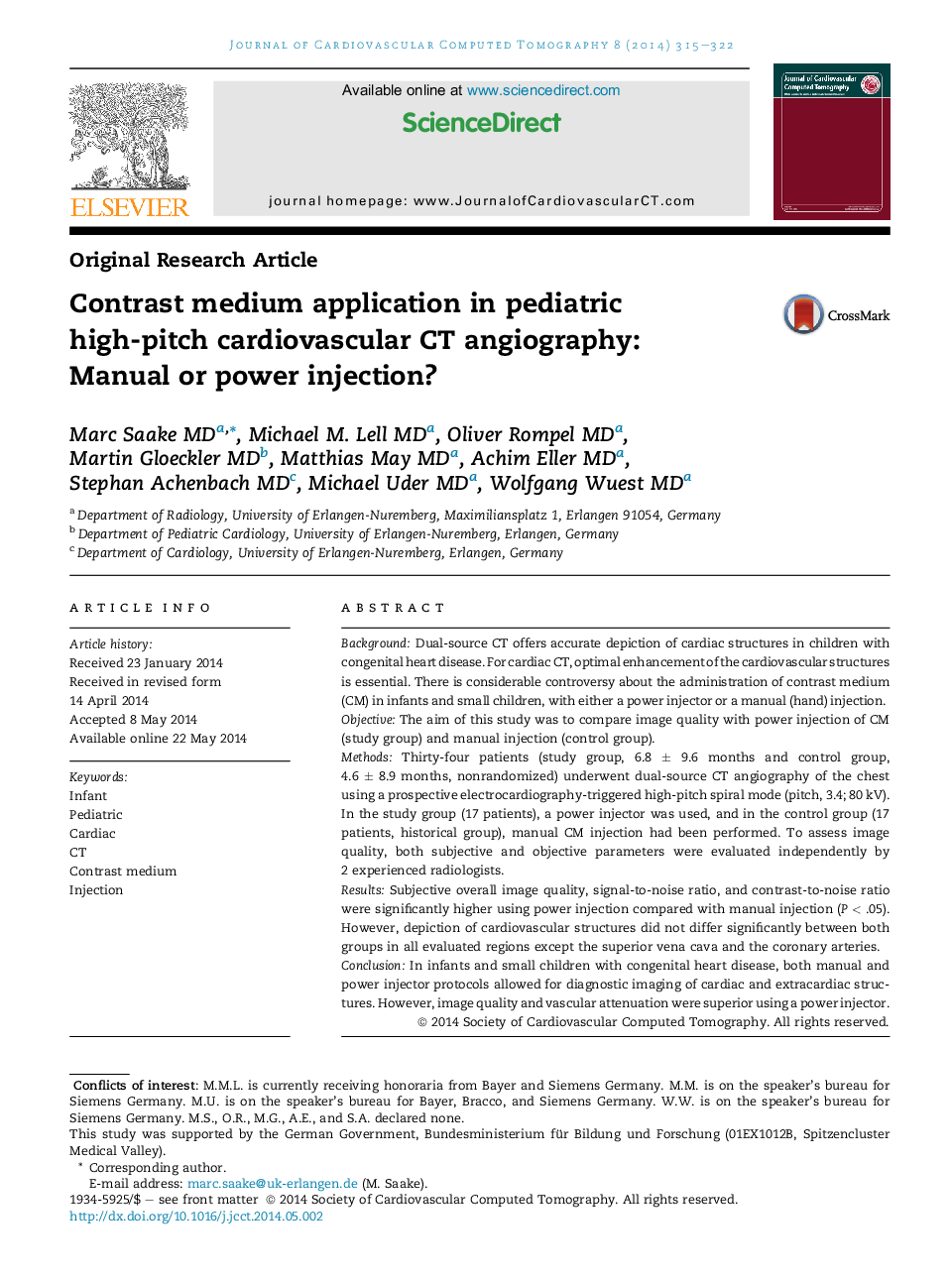| Article ID | Journal | Published Year | Pages | File Type |
|---|---|---|---|---|
| 2964430 | Journal of Cardiovascular Computed Tomography | 2014 | 8 Pages |
BackgroundDual-source CT offers accurate depiction of cardiac structures in children with congenital heart disease. For cardiac CT, optimal enhancement of the cardiovascular structures is essential. There is considerable controversy about the administration of contrast medium (CM) in infants and small children, with either a power injector or a manual (hand) injection.ObjectiveThe aim of this study was to compare image quality with power injection of CM (study group) and manual injection (control group).MethodsThirty-four patients (study group, 6.8 ± 9.6 months and control group, 4.6 ± 8.9 months, nonrandomized) underwent dual-source CT angiography of the chest using a prospective electrocardiography-triggered high-pitch spiral mode (pitch, 3.4; 80 kV). In the study group (17 patients), a power injector was used, and in the control group (17 patients, historical group), manual CM injection had been performed. To assess image quality, both subjective and objective parameters were evaluated independently by 2 experienced radiologists.ResultsSubjective overall image quality, signal-to-noise ratio, and contrast-to-noise ratio were significantly higher using power injection compared with manual injection (P < .05). However, depiction of cardiovascular structures did not differ significantly between both groups in all evaluated regions except the superior vena cava and the coronary arteries.ConclusionIn infants and small children with congenital heart disease, both manual and power injector protocols allowed for diagnostic imaging of cardiac and extracardiac structures. However, image quality and vascular attenuation were superior using a power injector.
